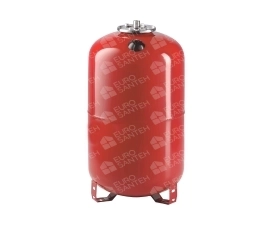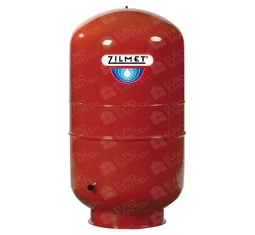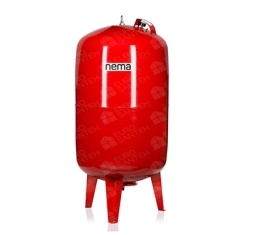Expansion tanks for heating for 80 liters in Chisinau
Expansion tanks for heating systems with a capacity of 80 liters are essential components in modern heating setups, serving a crucial role in maintaining system efficiency and safety. These tanks are specifically designed to compensate for the expansion and contraction of the heating medium, typically water, as it heats up and cools down, thus preventing excessive pressure build-up within the system.
The primary function of an expansion tank is to ensure a stable pressure within the heating system. As water heats up, it expands, which would otherwise lead to a significant increase in pressure within the system. Without an expansion tank, this pressure surge could potentially damage system components such as boilers, pipes, and radiators. An 80-liter expansion tank provides the necessary volume to accommodate this expansion, effectively regulating the system's pressure and safeguarding it against potential damage.
There are various types of expansion tanks available, but the most common type used in heating systems is the diaphragm expansion tank. This type of tank consists of a metal shell with a flexible diaphragm inside, separating the tank into two chambers: one containing the heating medium and the other containing compressed air or nitrogen. As the pressure in the system fluctuates, the diaphragm flexes accordingly, allowing the tank to adjust its volume and maintain a consistent pressure level.
Expansion tanks for heating systems with an 80-liter capacity are suitable for a wide range of heating applications, from residential homes to commercial buildings. They can be used in both single-pipe and dual-pipe systems, as well as systems with either forced or gravity circulation. These tanks play a critical role in ensuring the smooth and safe operation of the heating system, providing an additional layer of protection against pressure-related issues.
When selecting an expansion tank, it's essential to consider factors such as the size of the heating system, operating pressure, and temperature range. The tank should be appropriately sized to accommodate the specific needs of the system and should be compatible with its overall design and configuration. Additionally, the tank's construction materials should be durable and corrosion-resistant to ensure long-term reliability and performance.
Proper installation of the expansion tank is crucial for its effective operation. The tank should be installed in a location where it can easily accommodate changes in system pressure and temperature. It should also be securely supported and positioned vertically to prevent damage or leakage. Additionally, the tank's air charge should be checked and adjusted regularly to maintain optimal pressure levels within the system.
Regular maintenance of the expansion tank is also essential to ensure its continued performance. This includes inspecting the tank for signs of damage or corrosion, checking the integrity of the diaphragm, and replacing any worn or damaged components as needed. Periodic testing of the tank's pressure and air charge is also recommended to ensure that it remains within the specified range.
In conclusion, expansion tanks for heating systems with an 80-liter capacity are vital components that play a crucial role in maintaining the efficiency and safety of modern heating systems. By providing a buffer for the expansion of the heating medium, these tanks help regulate system pressure and protect against potential damage. With proper selection, installation, and maintenance, expansion tanks can contribute to the reliable and trouble-free operation of heating systems for years to come.









